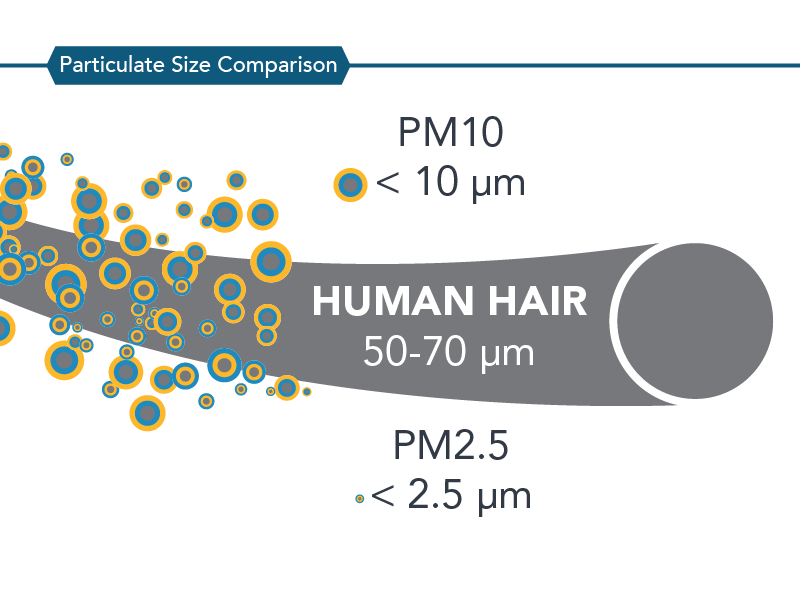What are PM2.5 and PM10? #
Particulate matter (PM) is a mixture of solid particles and liquid droplets found in the air. The size of these particles is directly linked to their potential for causing health problems. PM2.5 refers to fine particulate matter with a diameter of 2.5 micrometers or smaller, while PM10 includes particles with a diameter of 10 micrometers or smaller. To put this into perspective, a single human hair is about 70 micrometers in diameter, making these particles invisible to the naked eye.

Health Implications #
The size of particulate matter is a critical factor in determining its health effects:
- PM2.5: These fine particles can penetrate deep into the lungs and even enter the bloodstream. Exposure to PM2.5 is associated with serious health risks, including respiratory and cardiovascular diseases, as well as premature death.
- PM10: While larger than PM2.5, PM10 particles can still cause adverse health effects, particularly in individuals with preexisting respiratory conditions. These particles can lead to respiratory infections, reduced lung function, and aggravated asthma.
Safe Levels #
Organizations such as the World Health Organization (WHO) have established guidelines for acceptable levels of particulate matter:
- PM2.5: The annual mean should not exceed 10 µg/m³, and the 24-hour mean should not exceed 25 µg/m³.
- PM10: The annual mean should not exceed 20 µg/m³, and the 24-hour mean should not exceed 50 µg/m³.
Maintaining air quality within these limits is crucial for safeguarding health.
Importance of Monitoring in Buildings #
Monitoring PM2.5 and PM10 levels in buildings is essential for several reasons:
- Employee Health and Safety: Clean air promotes a healthier workplace, reducing absenteeism and improving overall productivity. By ensuring that particulate matter levels are kept within safe limits, companies can protect their employees from potential health hazards.
- Regulatory Compliance: Adhering to air quality standards helps businesses stay compliant with environmental regulations, avoiding potential fines and legal issues.
- ESG (Environmental, Social, and Governance) Considerations: Monitoring air quality is a vital component of a company’s ESG strategy. By proactively managing indoor air quality, businesses demonstrate their commitment to environmental stewardship and social responsibility. This not only enhances their reputation but also appeals to environmentally conscious investors and customers.
- Operational Efficiency: Poor air quality can impact HVAC systems and other building infrastructure, leading to higher maintenance costs and reduced efficiency. Regular monitoring helps in the early detection of issues, ensuring timely interventions and cost savings.
Conclusion #
Understanding and managing PM2.5 and PM10 levels in buildings is not just a regulatory requirement but a moral imperative. By prioritizing air quality, companies can create a safer, healthier, and more sustainable environment for their employees and stakeholders. This proactive approach aligns with broader ESG goals, fostering a culture of care and responsibility that benefits everyone involved.



